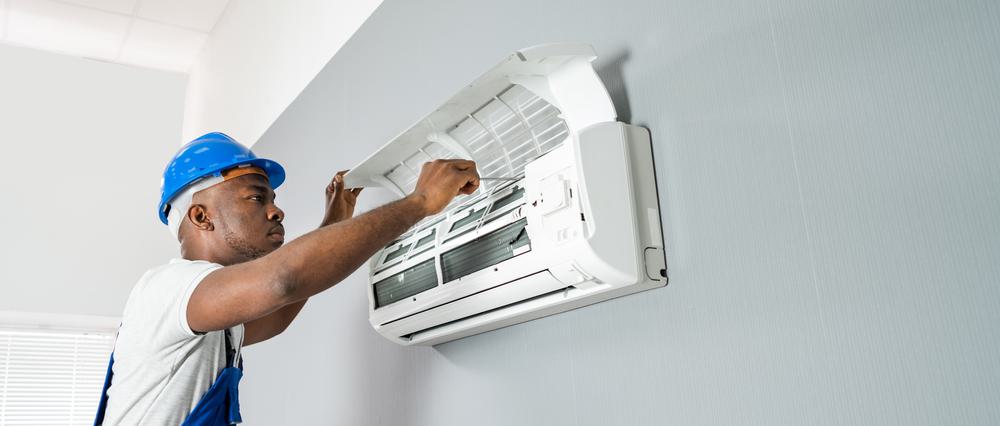
A P0 error in an Inverter AC is a common issue that many homeowners face. It typically indicates an IPM (Intelligent Power Module) Module Fault or IGBT (Insulated Gate Bipolar Transistor) Over-Current Protection error. In this comprehensive guide, we’ll discuss what a P0 error is, what causes it, how to fix it, and preventive measures to avoid the error in the future.
To fix a P0 error in an Inverter AC, first power off the unit at the breaker for 2-5 minutes to reset the system. Then, power it back on to see if the error has cleared. If the error persists, inspect the wiring between the main PCB and the compressor, check the outdoor fan and condenser, and ensure the connections between the compressor and IPM module are secure. If the issue continues, consult a professional. Regular maintenance and inspection can help prevent a P0 error in the future.
What is a P0 Error in an Inverter AC?
A P0 error code is a signal of an abnormal voltage being sent to the compressor of your Inverter AC unit. This can be caused by a faulty outdoor board, outdoor fan, or compressor malfunction. Some common signs that your Inverter AC is showing a P0 error include the display of the P0 error code on the AC’s LED screen or control panel, and the AC unit not functioning properly or not turning on at all.
Causes of a P0 Error
Several issues can cause a P0 error code in an Inverter AC. These include:
- Improper wiring
- Loose wiring connections
- IPM error
- Outdoor fan motor issues
- System pressure error
- Faulty main PCB (Printed Circuit Board)
- Bad ventilation of the outdoor unit
Step-by-Step Guide to Fix a P0 Error
Fixing a P0 error in an Inverter AC can be done at home with some basic troubleshooting. However, if the error persists, you may need to seek professional help. Here are the steps to fix a P0 error:
- Power off the unit: Turn off the AC at the breaker for 2-5 minutes, resetting the entire system.
- Power on the unit: Turn the power back on and see if the error goes away.
- Check wiring: If the error persists, inspect the wiring between the main PCB and the compressor for any loose or improper connections.
- Inspect the outdoor fan and condenser: Ensure that the outdoor fan and condenser are functioning properly.
- Check connections: Ensure the connections between the compressor and IPM module are clean and tight.
- Consult a professional: If the issue persists, you may need to consult a professional to check the refrigerant level, as low gas can cause the compressor to overheat and send incorrect signals back to the compressor.
Safety Measures While Fixing a P0 Error
When fixing a P0 error, it’s crucial to take several safety measures:
- Turn off the power: Always turn off the power to the unit at the breaker to prevent electrical accidents.
- Wear protective gear: Use gloves and safety goggles while working on the unit.
- Work in a well-ventilated area: This prevents the buildup of harmful gases or fumes.
- Isolate power before working on wiring: If you need to work on wiring, make sure the power is isolated before you begin.
Preventive Measures to Avoid a P0 Error
To prevent a P0 error in the future, follow these preventive measures:
- Ensure proper wiring: Check all wiring connections regularly.
- Maintain the outdoor fan motor: Keep the outdoor fan motor clean and in good working condition.
- Monitor system pressure: Be aware of any system pressure errors and address them promptly.
- Inspect the main PCB: Regularly check the main PCB for any signs of damage or malfunction, and replace it if necessary.
- Ensure proper ventilation of the outdoor unit: Make sure the outdoor unit is installed in a well-ventilated area.
By following the above steps, you can diagnose and fix a P0 error in your Inverter AC. However, if the error persists, it’s recommended to seek professional help. Remember, taking preventive measures can help avoid these issues in the future, ensuring your Inverter AC runs efficiently and smoothly.
Frequently Asked Questions
What is an IPM Module and an IGBT in the context of an Inverter AC?
The IPM (Intelligent Power Module) is a high-performance module that combines the functions of a power transistor and a control circuit. It is responsible for controlling the power supplied to the compressor of the Inverter AC. On the other hand, an IGBT (Insulated Gate Bipolar Transistor) is a type of transistor used in the IPM module to control the power supplied to the compressor. An IGBT Over-Current Protection error means that too much current is being supplied to the compressor.
How often should I check the wiring connections in my Inverter AC?
It’s advisable to check all wiring connections in your Inverter AC at least once a year. Regular inspection can help identify any loose or improper connections early, potentially preventing a P0 error.
What are the signs of a faulty main PCB in an Inverter AC?
Some signs of a faulty main PCB (Printed Circuit Board) include the AC unit not turning on, the unit not responding to the remote control, or the display panel not working. If you notice any of these signs, it’s advisable to seek professional help to inspect the main PCB.
What steps can I take to maintain the outdoor fan motor?
To maintain the outdoor fan motor, ensure it’s kept clean and free from debris. Regularly check the fan blades for any signs of wear or damage and replace them if necessary. Also, lubricate the motor regularly to keep it running smoothly.
Can a low refrigerant level cause a P0 error in an Inverter AC?
Yes, a low refrigerant level can cause the compressor to overheat, which could result in a P0 error. If you suspect a low refrigerant level, it’s best to consult a professional to check and refill the refrigerant if required.












